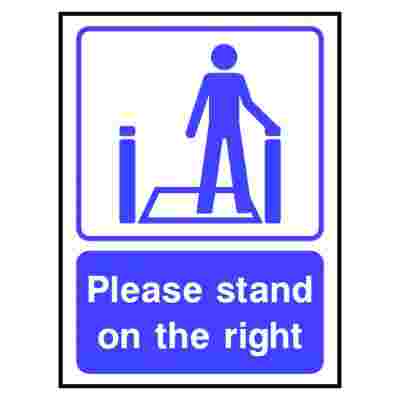Modern buildings are designed not only for function but also for safety, accessibility, and comfort. Among the essential yet often overlooked elements contributing to these goals are professional lift signs. These signs provide critical guidance to users, ensure smooth navigation, and uphold compliance with safety regulations. In busy environments such as office towers, residential complexes, hospitals, and shopping centres, the role of signage goes beyond mere labelling—it becomes a matter of efficiency, trust, and security.
Clear, well-designed signage helps people use lifts correctly, reduces risks during emergencies, and improves accessibility for those with disabilities. Professional lift signs also strengthen the building’s overall image, projecting reliability and care for occupants and visitors alike.
Why Lift Signs Matter
Lift sign is not just visual aids; they are indispensable safety tools. Without clear indicators, individuals may struggle to locate lifts, understand capacity limits, or respond appropriately during emergencies.
In buildings that serve hundreds or even thousands of people daily, signage helps avoid confusion and bottlenecks. A professional lift sign reassures occupants that safety standards are taken seriously, which in turn fosters trust.
Moreover, signage is a legal requirement in many jurisdictions, ensuring that property managers meet compliance obligations. By failing to display correct information, building owners may risk penalties, liability, and reduced credibility.
Core Functions of Professional Lift Signs
Professional lift signage serves multiple purposes, each contributing to safe and effective building management:
- Directional guidance
Clear signs help people locate lifts quickly, particularly in large or unfamiliar spaces. - Informational value
Signage indicates maximum weight, number of passengers, or restrictions such as “no trolleys.” This prevents misuse and ensures lifts are operated within safe limits. - Safety assurance
In times of emergency, signs warn users not to use lifts and direct them towards staircases. Without these notices, lives could be put at risk. - Accessibility support
Features such as braille, tactile lettering, and contrasting colours ensure people with visual impairments can navigate independently. This inclusivity enhances the building’s reputation and complies with accessibility regulations.
Each function demonstrates how critical lift signs are for both practical and ethical reasons.
Common Types of Lift Signs
Different situations call for specific kinds of signage:
- Standard operational signs
These include indicators showing the location of lifts, capacity, and floor numbers. - Safety warnings
Examples include “do not use in case of fire” or symbols highlighting prohibited behaviours. - Emergency signage
Clear guidance during crises ensures occupants know the correct evacuation procedures. - Maintenance notices
Among the most important of these is the lift out of service sign, which prevents accidental use of a non-functioning lift. Without this, occupants may experience safety hazards or inconvenience.
Printed signage remains the most dependable option for many of these uses, though digital signage is increasingly being integrated into building systems.
Design Principles for Effective Lift Signs
The effectiveness of a lift sign depends heavily on its design. Poorly designed signage may confuse rather than clarify. Best practices include:
- Readability
Fonts should be legible, with strong colour contrast. Placement at eye level enhances visibility. - Durability
Materials like foamex, acrylic, or aluminium ensure long-lasting use even in high-traffic environments. - Universality
Use of universally recognised icons allows people of different languages and cultures to understand instructions instantly. - Brand consistency
While safety and clarity must come first, professional signage can still integrate elements of a building’s branding.
By combining function with style, professional lift signs contribute to both safety and aesthetics.
Legal & Regulatory Compliance
Lift signage is more than a best practice—it is often a legal requirement. Building regulations typically demand:
- Clear safety notices such as “In case of fire, do not use lift.”
- Accessibility features, including braille and raised lettering.
- Instructions that are visible under varying light conditions.
Failure to comply may result in fines or liability in the event of an accident. Professional signs ensure that property managers meet their legal obligations while safeguarding occupants.
Benefits of Professional Lift Signage
The advantages of investing in quality signage extend across multiple areas:
- Safety improvements
Preventing accidents and misuse. - Better user experience
Visitors can move efficiently without confusion. - Accessibility
Inclusive design supports all users, including those with disabilities. - Professional image
High-quality signage reflects well on the management of the property.
Collectively, these benefits demonstrate that professional lift signs are an investment in both safety and reputation.
Practical Considerations When Choosing Lift Signs
When selecting signage, decision-makers should weigh several factors:
- Placement and visibility
Signs must be easily noticeable at key decision points. - Material choice
Durable options like vinyl, foamex, or acrylic withstand daily use and remain visually appealing. - Integration with technology
Digital screens can provide real-time updates, such as “lift out of service” messages.
These considerations ensure the signage remains practical, long-lasting, and adaptable to modern needs.
Future Trends in Lift Signage
The field of signage is evolving rapidly. Key trends include:
- Smart digital signage
Interactive systems can adapt messages instantly, displaying real-time alerts. - Eco-friendly materials
Buildings are increasingly demanding sustainable signage solutions that align with environmental goals. - Architectural integration
Modern designs blend signage seamlessly into interior aesthetics without sacrificing visibility.
These innovations point towards a future where lift signage is even more efficient, adaptable, and environmentally responsible.
Conclusion
Professional lift signage is far more than an afterthought—it is a vital component of safe, efficient, and user-friendly building design. From guiding people to lifts to providing crucial safety information, the role of signs cannot be overstated. Whether highlighting routine details or displaying urgent warnings such as a lift out of service notice, professional signs contribute to safety, accessibility, and professionalism in every environment.
For organisations seeking reliable signage solutions, Foamex Printing Company provides professional expertise, durable materials, and custom designs tailored to modern building needs.




